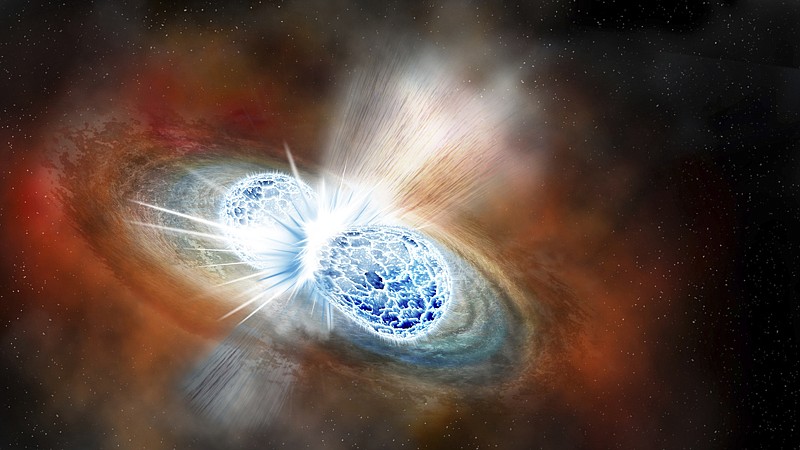WASHINGTON-It was a faint signal, but it told of one of the most violent acts in the universe, and it would soon reveal secrets of the cosmos, including how gold was created.
Astronomers around the world reacted to the signal quickly, focusing telescopes located on every continent and even in orbit to a distant spot in the sky.
What they witnessed in mid-August and revealed Monday was the long-ago collision of two neutron stars-a phenomenon California Institute of Technology's David H. Reitze called "the most spectacular fireworks in the universe."
"When these things collide, all hell breaks loose," he said.
Measurements of the light and other energy emanating from the crash have helped scientists explain how planet-killing gamma ray bursts are born, how fast the universe is expanding, and where heavy elements like platinum and gold come from.
"This is getting everything you wish for," said Syracuse University physics professor Duncan Brown, one of more than 4,000 scientists involved in the blitz of science that the crash kicked off. "This is our fantasy observation."
It started in a galaxy called NGC 4993, seen from Earth in the Hydra constellation. Two neutron stars, collapsed cores of stars so dense that a teaspoon of their matter would weigh 1 billion tons, danced ever faster and closer together until they collided, said Carnegie Institution astronomer Maria Drout.
The crash, called a kilonova, generated a fierce burst of gamma rays and a gravitational wave, a faint ripple in the fabric of space and time, first theorized by Albert Einstein.
"This is like a cosmic atom smasher at a scale far beyond humans would be capable of building," said Andy Howell, a staff scientist at the Las Cumbres Observatory. "We finally now know what happens when an unstoppable force meets an immovable object and it's a kilonova."


